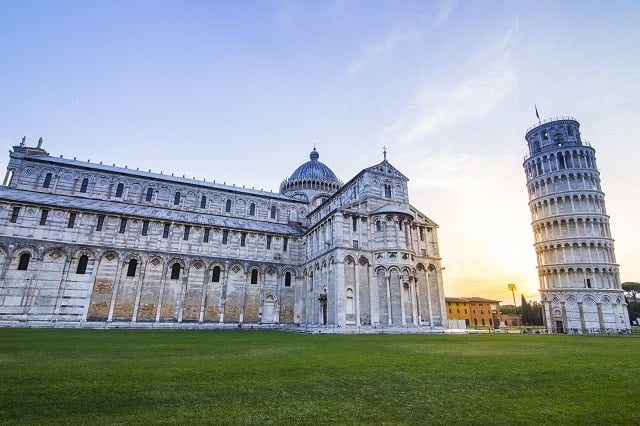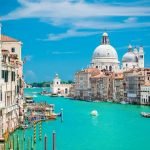Why did Italian merchants develop advances in naval travel? The importance of naval travel in Italian merchant history cannot be overstated. From the birth of naval innovation to the impact on global trade and exploration, this article will explore the factors driving Italian merchant exploration, the role of merchant guilds, competition and rivalry, technological advancements, and the enduring legacy of Italian merchants in advancing naval travel.
Italian merchant history is closely tied to the development and advancement of naval travel. The birth of Italian naval innovation can be traced back to early developments and influences that shaped the way merchants approached maritime trade. Economic and political factors also played a significant role in driving Italian merchant exploration, while competition and rivalry fueled innovation through trade.
Italian merchant guilds have also played a crucial role in advancing naval travel, contributing to technological advancements in navigational tools and shipbuilding. These contributions have had a lasting impact on global trade and exploration, shaping Italy’s influence in the Mediterranean and beyond. The enduring legacy of Italian merchants in advancing naval travel continues to be recognized today.
The impact of Italian naval travel advancements on global trade and exploration has been profound. Italy’s contributions to navigational tools and shipbuilding have not only influenced its own maritime history but have also left a lasting mark on international trade routes. As we delve into the historical significance of Italian merchant innovation, it becomes clear how their advancements continue to shape our understanding of naval travel.
The Birth of Italian Naval Innovation
Italian merchants developed advances in naval travel due to a combination of factors that spurred innovation and exploration during the medieval and Renaissance periods. During this time, Italy was a hub of trade and commerce, with merchant city-states like Venice, Genoa, and Pisa dominating the Mediterranean trade routes. These city-states relied heavily on maritime travel to conduct business with other regions, which led to the development of advancements in naval technology and navigation.
Some key reasons why Italian merchants focused on advancing naval travel include:
- Geographic Location: As a peninsula surrounded by the Mediterranean Sea, Italy’s location made it ideal for maritime trade. This proximity to the sea provided Italian merchants with both the necessity and opportunity to innovate in naval travel.
- Economic Prosperity: The wealth generated from trade allowed Italian merchants to invest in shipbuilding and navigational tools. The economic prosperity of these merchant city-states was directly linked to their ability to expand their reach through improved naval travel.
- Competition with Other Maritime Powers: Italian merchants faced competition from other maritime powers such as Spain, Portugal, and the Ottoman Empire. This rivalry drove them to continuously seek new ways to improve their ships and navigation techniques in order to maintain their dominance in trade.
These factors contributed to an environment where Italian merchants were constantly seeking ways to gain an edge in naval travel, leading them to make significant innovations that would shape the course of global exploration and trade.
Economic and Political Factors Driving Italian Merchant Exploration
Italian merchants were driven to develop advances in naval travel due to a combination of economic and political factors. One of the key economic drivers was the desire to establish new trade routes and access valuable resources from distant lands. Italy’s central location in the Mediterranean made it an ideal hub for trade, and merchants sought to expand their reach to increase their wealth and influence.
Additionally, the political climate of the time played a significant role in driving Italian merchant exploration. The competition between city-states such as Venice, Genoa, and Pisa fueled a desire for territorial expansion and control over lucrative trade routes.
The Italian peninsula was also experiencing a period of urban growth and increased economic prosperity during the Renaissance. As a result, there was a growing demand for luxury goods such as silk, spices, and precious metals from Asia and the East. Italian merchants recognized the potential profits that could be gained from directly accessing these goods through maritime exploration, rather than relying on middlemen or intermediary traders.
Italian city-states also sought to assert their dominance in the Mediterranean region, leading to heightened competition with other European powers such as Spain and Portugal. This drive for political power and influence further incentivized Italian merchants to invest in naval innovation and exploration. The combined economic and political factors created a fertile environment for Italian merchants to develop advances in naval travel, ultimately shaping Italy’s role as a major player in global trade and exploration during this era.
| Economic Factors | Political Factors |
|---|---|
| Desire to establish new trade routes | Competition between city-states |
| Growing demand for luxury goods | Desire for territorial expansion |
| Potential profits from direct access to goods | Competition with other European powers |
The Role of Italian Merchant Guilds in Advancing Naval Travel
Italian merchant guilds played a crucial role in advancing naval travel during the medieval and Renaissance periods. These powerful organizations, such as the Venetian Great Council and the Genoese Compagna Communis, wielded significant influence over trade, politics, and maritime activities. But why did Italian merchants develop advances in naval travel?
One reason for this development was the mutually beneficial relationship between merchant guilds and the Italian city-states. The guilds provided financial support and expertise for advancements in ship design, navigation techniques, and cartography. In return, Italian cities like Venice, Genoa, and Pisa benefitted from increased trade routes, higher profits, and expanded influence in international commerce.
Moreover, the competitive nature of Italian merchant guilds also served as a driving force behind innovations in naval travel. In an era marked by fierce rivalry between trading powers in the Mediterranean and beyond, merchants sought to gain a strategic advantage through technological superiority. This competition led to significant investments in research and development of maritime technology.
Finally, the organizational structure of merchant guilds facilitated collaboration among skilled artisans, shipbuilders, navigators, and cartographers. By bringing together these experts under a unified umbrella of common interests and goals, Italian merchant guilds were able to streamline efforts to improve naval travel and enhance their collective economic power.
| Italy’s Role | Advancements |
|---|---|
| Mutually beneficial relationship between merchant guilds and city-states | Increased trade routes; higher profits |
| Competition among merchant guilds | Investments in maritime technology |
| Collaboration within merchant guilds | Streamlined efforts; improved naval travel |
Competition and Rivalry
During the height of the Italian Renaissance, competition and rivalry among Italian merchant city-states played a significant role in driving advancements in naval travel. The fierce competition between city-states such as Venice, Genoa, and Pisa fueled innovation as each sought to gain an economic advantage through trade. This section will explore how this intense rivalry spurred Italian merchants to develop and enhance their naval capabilities, leading to significant contributions to the field of maritime exploration.
Staking Claim in Trade Routes
Italian city-states were strategically located along crucial trade routes in the Mediterranean, making them key players in regional and international trade. The desire to maintain control over these routes and secure access to valuable resources led Italian merchants to invest in expanding their naval fleets. The competition for dominance over lucrative trade networks drove continuous improvements in ship design, navigation, and naval tactics.
Seeking Advantage Through Innovation
In their pursuit of commercial superiority, Italian merchant city-states constantly sought ways to gain an edge over their rivals. This drive for advantage led to substantial investment in technological advancements related to naval travel, including improved navigational tools, faster and more maneuverable ships, and innovations in maritime infrastructure. The resulting innovations not only strengthened the position of individual city-states but also propelled Italy to the forefront of global maritime exploration.
Influence on Global Maritime Trade
The intense competition among Italian merchant city-states had a profound impact on global maritime trade. As they vied for dominance in key trading hubs such as Constantinople and Alexandria, Italian merchants pushed the boundaries of naval travel, expanding their reach into new territories and establishing trade connections across continents. Their competitive spirit not only revolutionized naval technology but also reshaped global commerce, leaving a lasting legacy on the world’s oceans for centuries to come.
Italian merchants’ drive for economic supremacy created a fertile environment for innovation in naval travel. It was this competitive landscape that ultimately propelled Italy to become a dominant force in maritime exploration and trade during the Renaissance period-and solidified its enduring legacy as a powerhouse of naval innovation.
Technological Advancements
Throughout history, the Italian merchants developed advances in naval travel through their significant contributions to navigational tools and shipbuilding. These technological advancements played a crucial role in shaping the course of global exploration and trade. The development of new navigational tools and the improvement of shipbuilding techniques allowed Italian merchants to expand their reach and influence across the seas.
Advancements in Navigational Tools
Italian merchants were at the forefront of developing and refining navigational instruments that made sea travel more accurate and efficient. One of the most notable contributions was the invention of the compass, which revolutionized navigation by providing a reliable means of determining direction at sea.
Additionally, Italian merchants also made significant progress in cartography, creating more accurate maps that aided in navigation and exploration. These advancements in navigational tools not only benefitted Italian merchants but also had a profound impact on global exploration as a whole.
Innovations in Shipbuilding
Italian merchants also played a pivotal role in advancing shipbuilding techniques, leading to the creation of faster, sturdier, and more seaworthy vessels. Through their expertise in maritime trade, Italian merchants developed innovative designs for ships that were more suited for long-distance voyages.
These advancements allowed them to embark on longer journeys and expand their trade networks across distant lands. The development of more advanced ships also facilitated the exchange of goods and ideas between different regions, contributing to cultural diffusion and economic growth.
The technological advancements in navigational tools and shipbuilding by Italian merchants not only transformed their own capabilities for naval travel but also had far-reaching consequences for global trade and exploration. It paved the way for new trade routes, increased connectivity between different civilizations, and laid the foundation for future maritime adventures that would shape world history.
The Impact of Italian Naval Travel Advancements on Global Trade and Exploration
In the centuries following the Middle Ages, Italy emerged as a dominant force in global trade and exploration, thanks in large part to the advancements made in naval travel by Italian merchants. These advancements played a crucial role in shaping the course of world history and influencing the trajectory of global trade and exploration. But what were these advancements, and how did they impact global trade and exploration?
Italian merchants developed advances in naval travel for several reasons, one of which was the desire to expand their trading routes and access new markets. The Mediterranean Sea served as a vital artery for trade during this time, and Italian merchants recognized the need to enhance their ability to navigate this body of water effectively. As a result, they invested heavily in developing new navigational tools and shipbuilding techniques that allowed them to venture further from their home ports.
Moreover, the impact of Italian naval travel advancements extended far beyond mere trade routes. Italy’s dominance in naval travel allowed its merchants to explore new territories, establish trading outposts, and forge economic and political ties with distant lands. This not only contributed to the growth of Italy’s influence on global trade but also paved the way for future European explorers to follow in their wake.
Legacy of Italian Merchant Innovation
Italian merchants played a pivotal role in advancing naval travel, which ultimately shaped Italy’s influence in the Mediterranean and beyond. Their innovations and contributions not only revolutionized trade and exploration but also left a lasting legacy that continues to be recognized today.
One of the main reasons why Italian merchants developed advances in naval travel was the growing competition and rivalry among different merchant groups. As Italian city-states vied for dominance in trade routes, there was a constant drive to improve naval technology and efficiency. This led to significant developments in shipbuilding techniques, navigation tools, and maritime infrastructure.
The economic and political factors of the time also played a crucial role in driving Italian merchant exploration. With the rise of mercantilism and the desire to secure valuable resources from distant lands, Italian merchants sought to expand their reach through advancements in naval travel. The need for faster and more reliable ships meant that substantial investments were made into research and development, ultimately pushing forward innovations in maritime technology.
Furthermore, the role of Italian merchant guilds cannot be overlooked when examining the advancement of naval travel. These powerful organizations exerted significant influence over trade policies and regulations, which allowed them to promote technological advancements and foster a culture of innovation within the maritime industry. The collaboration between merchant guilds and skilled shipbuilders laid the groundwork for Italy’s enduring impact on global trade and exploration.
- Competition among merchant groups
- Economic and political factors driving exploration
- Role of Italian merchant guilds
Conclusion
In conclusion, the enduring legacy of Italian merchants in advancing naval travel cannot be overstated. The developments and innovations made by Italian merchants in the field of naval travel have had a lasting impact not only on Italy’s influence in the Mediterranean and beyond but also on global trade and exploration.
The question “why did Italian merchants develop advances in naval travel” can be answered by looking at a combination of economic, political, and competitive factors that motivated these merchants to continually innovate and push the boundaries of maritime exploration.
The birth of Italian naval innovation was influenced by various factors, including access to resources, geographical location, and the desire to expand trade networks. As a result, Italian merchant guilds played a pivotal role in advancing naval travel through investment in new technologies and shipbuilding techniques. These advancements not only solidified Italy’s position as a dominant force in Mediterranean trade but also facilitated exploration to distant lands, contributing to the larger narrative of global exploration during this time period.
Overall, the impact of Italian naval travel advancements has left an indelible mark on history. It has shaped Italy’s influence in global trade, enabled access to new markets, and contributed to the interconnectedness of cultures worldwide. The enduring legacy of Italian merchants serves as a testament to their ingenuity and entrepreneurial spirit, leaving behind a rich history that continues to inspire future generations of explorers and innovators.
Frequently Asked Questions
What Led Italian Merchants to Develop Advances in Naval Travel?
Italian merchants developed advances in naval travel due to their desire to expand trade routes and increase profits. They were motivated by the search for new markets and resources, as well as competition with other European powers.
What Were Four Reasons That Drove People to Explore New Lands?
The four main reasons that drove people to explore new lands were economic opportunity, desire for wealth and precious resources, spreading religious beliefs, and the pursuit of adventure and glory. These driving forces led explorers to take risks and venture into the unknown.
What Inspired Europeans to Begin Exploring Foreign Lands in the 1400s?
Europeans in the 1400s were inspired to begin exploring foreign lands by a combination of factors such as the desire to find new trade routes to Africa and Asia, the influence of Renaissance humanism fostering curiosity about the world, technological advancements making long-distance travel more feasible, and religious motivations such as spreading Christianity.
These factors collectively drove European exploration during this time period.

I’m a passionate traveler, writer, and Italophile. My fascination with Italy’s history, art, and culture has led me on countless adventures across the Italian landscape. Through “I Live Italy,” I share my love for this extraordinary country and aims to inspire others to explore its boundless beauty.





